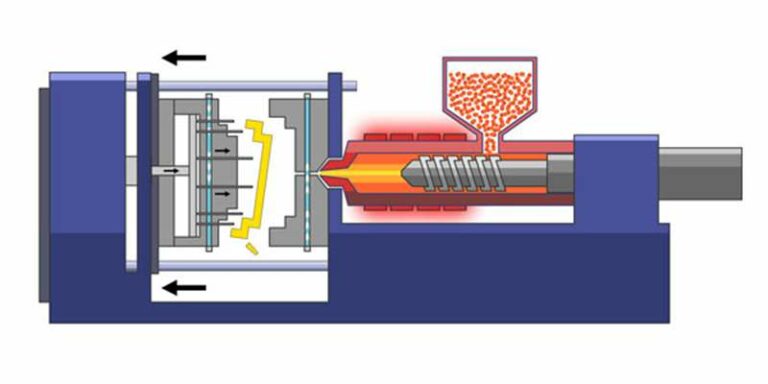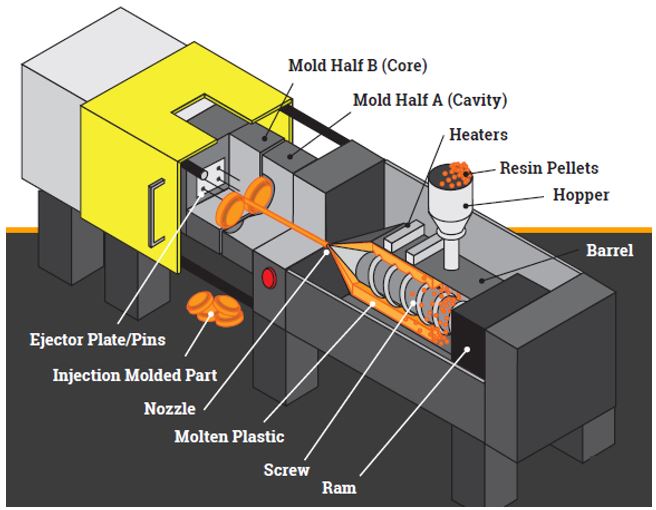Just How Plastic Injection Molding Ensures Consistency and Precision in Manufacturing
Just How Plastic Injection Molding Ensures Consistency and Precision in Manufacturing
Blog Article
The Future of Plastic Injection Molding: Patterns and Technologies to See
As the plastic injection molding market advances, several essential patterns are arising that assurance to reshape its landscape. Automation and smart manufacturing methods are readied to boost productivity, while the change towards lasting products reflects an expanding ecological consciousness. Developments in 3D printing are leading the method for unmatched design flexibility. These developments also bring forth difficulties that require cautious factor to consider. Recognizing just how these aspects will certainly interact and influence future practices is crucial for stakeholders looking to navigate this transformative duration efficiently.
Automation and Smart Manufacturing
As the plastic injection molding sector develops, automation and clever production are taking spotlight, transforming manufacturing processes - Plastic Injection Molding. The integration of innovative technologies such as robotics, IoT (Net of Things), and expert system is enabling producers to enhance efficiency, reduce functional prices, and improve product quality. Automated systems improve operations, minimizing hand-operated intervention and boosting throughput, which is vital in meeting the increasing need for fast production cycles
Smart producing modern technologies assist in real-time tracking and data analysis, permitting business to maximize device performance and forecast upkeep requirements. This aggressive technique not only decreases downtime yet additionally prolongs the life expectancy of devices. The usage of collective robotics, or cobots, boosts the flexibility of manufacturing lines, allowing equipments and employees to run side by side securely and effectively.
The fostering of automation in plastic injection molding is not just a fad however a tactical crucial for companies intending to remain competitive in an international market. By using these modern technologies, suppliers can accomplish greater precision, minimize waste, and adjust swiftly to transforming client needs, placing themselves for lasting development in a significantly automated future.
Sustainable Materials and Practices
The push in the direction of automation and clever manufacturing has led the way for a greater emphasis on sustainable materials and techniques within the plastic injection molding sector. Business are significantly looking for green options to standard petroleum-based plastics, leading to the adoption of bio-based and recycled materials. These lasting products not only reduce environmental effect but likewise line up with customer need for greener products.
Furthermore, partnership between makers, product vendors, and ecological companies is promoting technology in the advancement of sustainable materials that meet performance criteria without jeopardizing high quality. As regulations around plastic use become more stringent, the sector is positioned to adapt by embracing these lasting techniques, making sure lasting practicality and decreasing reliance on non-renewable resources. The assimilation of sustainability right into plastic injection molding is not just a trend; it is becoming a necessary element of company obligation and operational excellence.
Breakthroughs in 3D Printing
Current improvements in 3D printing modern technology are substantially transforming the landscape of plastic injection molding. The integration of additive manufacturing procedures enables the fast prototyping of intricate geometries that were when tough or difficult to accomplish via standard techniques - Plastic Injection Molding. This ability not just speeds up product advancement cycles however additionally minimizes product waste, aligning with the growing demand for sustainable production practices
Furthermore, the development of hybrid production techniques, which integrate 3D printing and shot molding, provides producers the ability to develop complex designs while maintaining the performance of mass manufacturing. This method allows the production of tailored parts tailored to certain customer demands without giving up the speed and scalability that injection molding gives.
Furthermore, developments in materials, such as high-performance polymers and compounds specifically designed for 3D printing, are improving the useful capacities of printed elements. These products can withstand better tension and exhibit enhanced thermal residential properties, making them suitable for even more demanding applications.
As 3D printing remains to advance, its integration right into plastic injection molding procedures guarantees to improve productivity, lower costs, and foster development in product style, placing makers to better satisfy the difficulties of an affordable market.
Data Analytics and IoT Combination
Information analytics and the integration of the Net of Things (IoT) are transforming plastic injection molding by supplying producers with unprecedented understandings into their operations. By leveraging real-time Look At This data collected from interconnected makers and sensing units, manufacturers can keep an eye on efficiency metrics, determine inadequacies, and maximize manufacturing processes. This data-driven approach promotes predictive maintenance, minimizing downtime and expanding devices life expectancy.
In addition, IoT assimilation enables enhanced quality assurance. By continually tracking variables such as cycle, temperature level, and stress times, makers can swiftly discover variances from developed parameters and make changes in genuine time. This not just enhances product uniformity yet additionally lowers waste and scrap rates.
The blend of information analytics and IoT technologies additionally equips suppliers to embrace more dexterous manufacturing methods. With accessibility to extensive information analytics, organizations can respond to market demands with greater adaptability, adjusting manufacturing routines and configurations as required. This adaptability is necessary in a rapidly altering production landscape.

Customization and Style Flexibility
Exactly how can personalization and layout adaptability check boost the competition of plastic injection molding? In a progressively diverse market, the capability to offer customized services is critical. Modification enables makers to meet details client requirements, suiting one-of-a-kind measurements, forms, and capabilities that standard items may not meet. This versatility not only fosters client loyalty however likewise opens up avenues for new business possibilities throughout different markets, from auto to durable goods.
Advancements in design innovations, such as computer-aided layout (CAD) and quick prototyping, further strengthen this pattern. These devices enable designers to produce detailed patterns and complex geometries, which can be seamlessly integrated into the manufacturing procedure. Because of this, suppliers can react quickly to altering customer check these guys out preferences and market demands.
Additionally, the implementation of modular tooling systems enhances design adaptability, permitting quicker changes between different item styles without substantial downtime. This versatility can lead to reduced preparations and lower manufacturing expenses, making companies much more affordable and dexterous. Eventually, welcoming customization and layout flexibility in plastic injection molding not just boosts item offerings but likewise reinforces market positioning in an ever-evolving landscape.
Conclusion
The future of plastic injection molding is defined by substantial advancements in automation, sustainable methods, and cutting-edge products. The integration of IoT and data analytics will improve functional performance and anticipating maintenance. The adoption of bio-based and recycled materials, alongside development in 3D printing, will promote sustainability within the market. Personalization with modular tooling and fast prototyping will certainly allow makers to continue to be receptive and competitive to the dynamic demands of the market.

The future of plastic shot molding is characterized by considerable innovations in automation, sustainable methods, and ingenious products.
Report this page